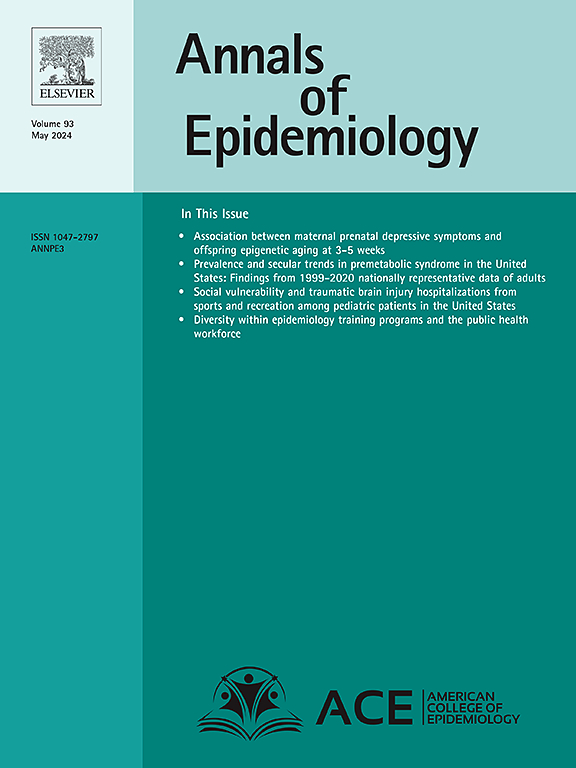1999 - 2023年日本大都市与非大都市地区脑卒中死亡率差异分析
IF 3.3
3区 医学
Q1 PUBLIC, ENVIRONMENTAL & OCCUPATIONAL HEALTH
引用次数: 0
摘要
目的:本研究调查了日本大都市和非大都市地区中风死亡率的趋势。方法1999 - 2023年40-79岁人群脑卒中死亡率 数据来源于日本生命统计。每年按性别和地区计算年龄标准化的中风死亡率。此外,还进行了年龄-时期-队列分析,并按性别和地区计算了每个年龄组、年份和队列的估计中风死亡率。结果多年来,非大都市地区的年龄标准化死亡率一直高于大都市地区,而男性年龄标准化死亡率的差异随着时间的推移而缩小。此外,在20世纪20年代出生的男性和20世纪20年代出生的女性和20世纪20年代出生的女性之间,这两个地区估计死亡率的差异缩小了,并最终消失了。相反,从20世纪50年代出生的队列开始,男性估计死亡率的区域差异开始扩大。结论各地区脑卒中年龄标准化死亡率存在差异,且因出生队列不同而存在差异。本文章由计算机程序翻译,如有差异,请以英文原文为准。
Analysis of differences in stroke mortality rates between metropolitan and non-metropolitan areas in Japan from 1999 to 2023
Purpose
This research examined trends in stroke mortality rates between metropolitan and non-metropolitan areas in Japan.
Methods
Data regarding stroke mortality for individuals aged 40–79 from 1999 to 2023 were sourced from Japan’s Vital Statistics. Age-standardized stroke mortality rate was computed annually for by sex and area. Moreover, an age-period-cohort analysis was performed, and the estimated stroke mortality rate was calculated for each age group, year, and cohort by sex and area.
Results
Throughout the years, the age-standardized mortality rate in non-metropolitan areas consistently exceeded that of metropolitan areas, while the difference in the age-standardized mortality rate diminished over years in men. Furthermore, the difference in estimated mortality rates between these two areas diminished and ultimately vanished from the cohorts born in the 1920s to those born in the late 1930s for men and from cohorts born in the 1920s to those born in the early 1950s for women. Conversely, starting from the cohorts born in the 1950s, the regional difference in the estimated mortality rates began to expand in men.
Conclusions
The results revealed the difference in age-standardized stroke mortality rates between the areas, and the difference in mortality rate varied depending on the birth cohort.
求助全文
通过发布文献求助,成功后即可免费获取论文全文。
去求助
来源期刊

Annals of Epidemiology
医学-公共卫生、环境卫生与职业卫生
CiteScore
7.40
自引率
1.80%
发文量
207
审稿时长
59 days
期刊介绍:
The journal emphasizes the application of epidemiologic methods to issues that affect the distribution and determinants of human illness in diverse contexts. Its primary focus is on chronic and acute conditions of diverse etiologies and of major importance to clinical medicine, public health, and health care delivery.
 求助内容:
求助内容: 应助结果提醒方式:
应助结果提醒方式:


